Safe Biking Tips
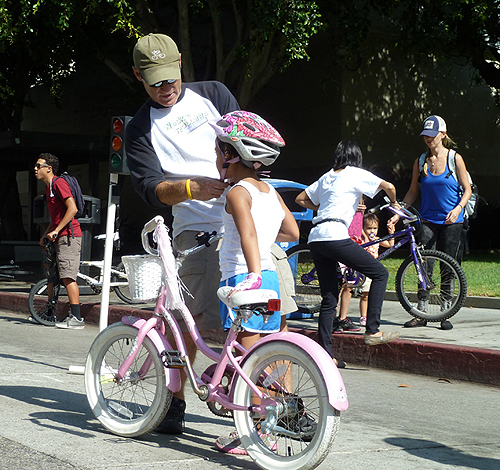
Teaching children – and parents – how to properly adjust helmets is essential in any bike safety lesson.
Riding bikes is best when done safely. Read below for tips on properly fitting your helmet, performing a pre-ride ABC Quick Check, fixing flats, locking your bike and rules of the road and more!
For riders under 18, wearing a helmet is not only smart, it’s the law.
Wear a bike helmet EVERY TIME YOU RIDE. A head injury can mean brain injury. A helmet can provide protection for your face, head, and brain in case you fall down. Heads are a lot like watermelons – they are hard on the outside and soft ands squishy on the inside and it’s best to keep the soft and squishy stuff right where it is. Plus, heads don’t grow back and it’s the law. In California, if you are under 18, you must wear a helmet on a bike, skateboard or scooter (CVC 21212)
Your helmet should have a sticker that says it meets standards set by the Consumer Product Safety Commission (CPSC).
Helmet Safety: Wearing a helmet is important, but wearing it PROPERLY is essential. Follow these easy steps to make sure your helmet fits correctly:

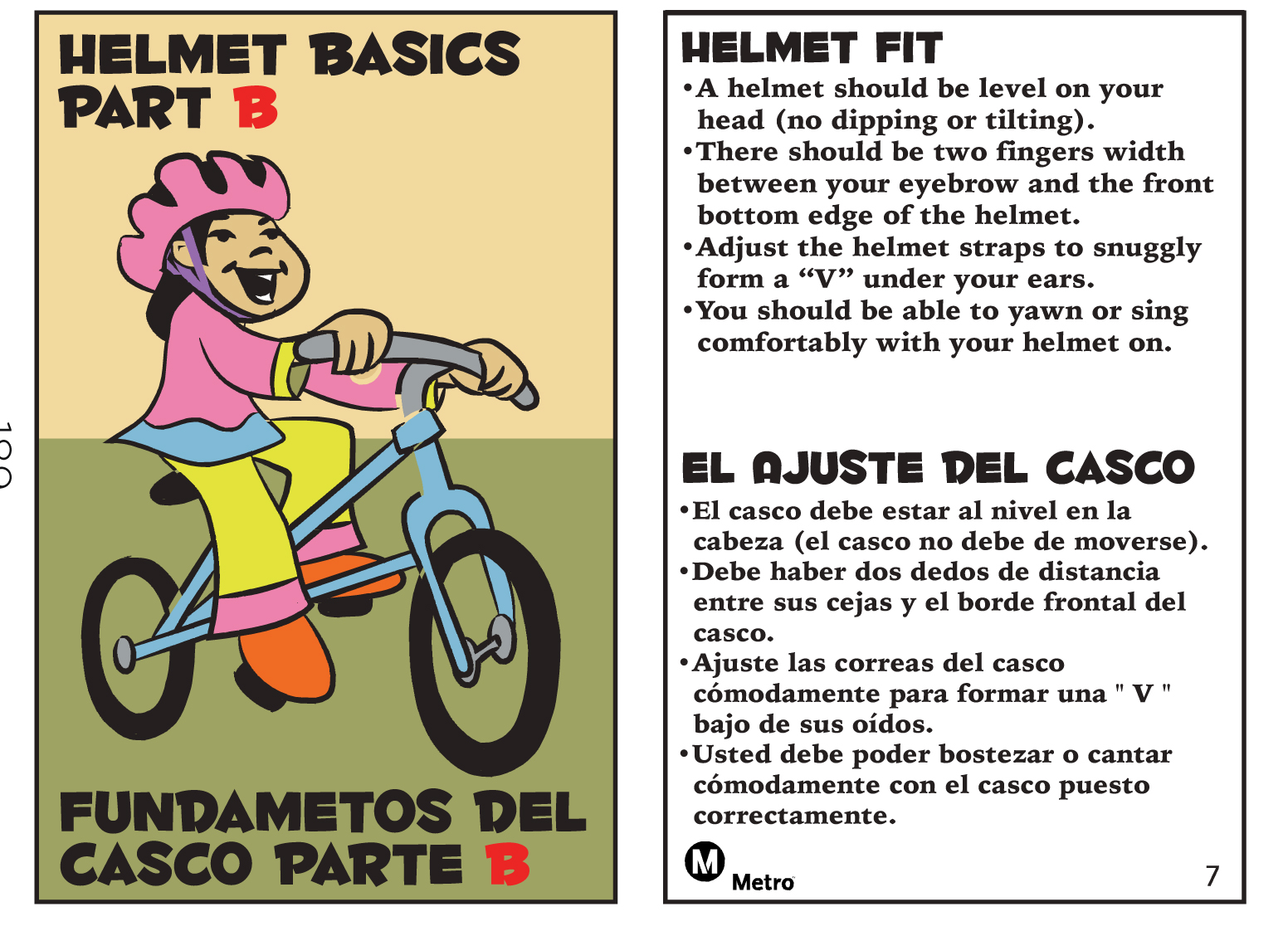
- Your helmet should fit you properly. Use the “Eyes, Ears, Mouth” test: If your helmet is on properly: Look up – you should be able to see your helmet with your EYES without tilting your head; the straps should encircle your EARS comfortably by forming a “V” around them; if the strap is adjusted properly, you should be able to open your MOUTH wide and feel the helmet snug against your head.
- Your helmet should be worn level and cover your forehead. It is not a hat, so don’t tip it backward. Make sure the straps are adjusted so they’re snug enough that you can’t pull or twist the helmet around on your head. Make sure they are fastened.
- Never wear a hat under your helmet
Be Smart
- Know and obey all traffic laws.
- Remember that pedestrians have the right of way. Use a bell or horn to alert pedestrians.
- Check that your bike is ready to ride. Keep your tires inflated, seat adjusted and make sure brakes and gears are operating correctly. Perform an ABC Quickcheck before every ride: A= Air Pressure (tires and wheels too); B= Brakes (levers, cables and pads); C= Chain and Drive train (cranks and gears too); Quick = quick releases; Check = Check your bike before riding.
- Be prepared: Know your route and let someone know where you will be riding and when you expect to arrive and return.
- Carry a water bottle.
- Use maps – printed and online.
- Carry a bike lock and remember to lock your bike (click for “Lock it or Lose it” tips.)
- Carry a basic emergency kit with you: spare innertube and/or patch kit, bike pump, multi-tool and spare change.
Need more help? Check out these videos on How to Fix a Flat and How to Change an Innertube
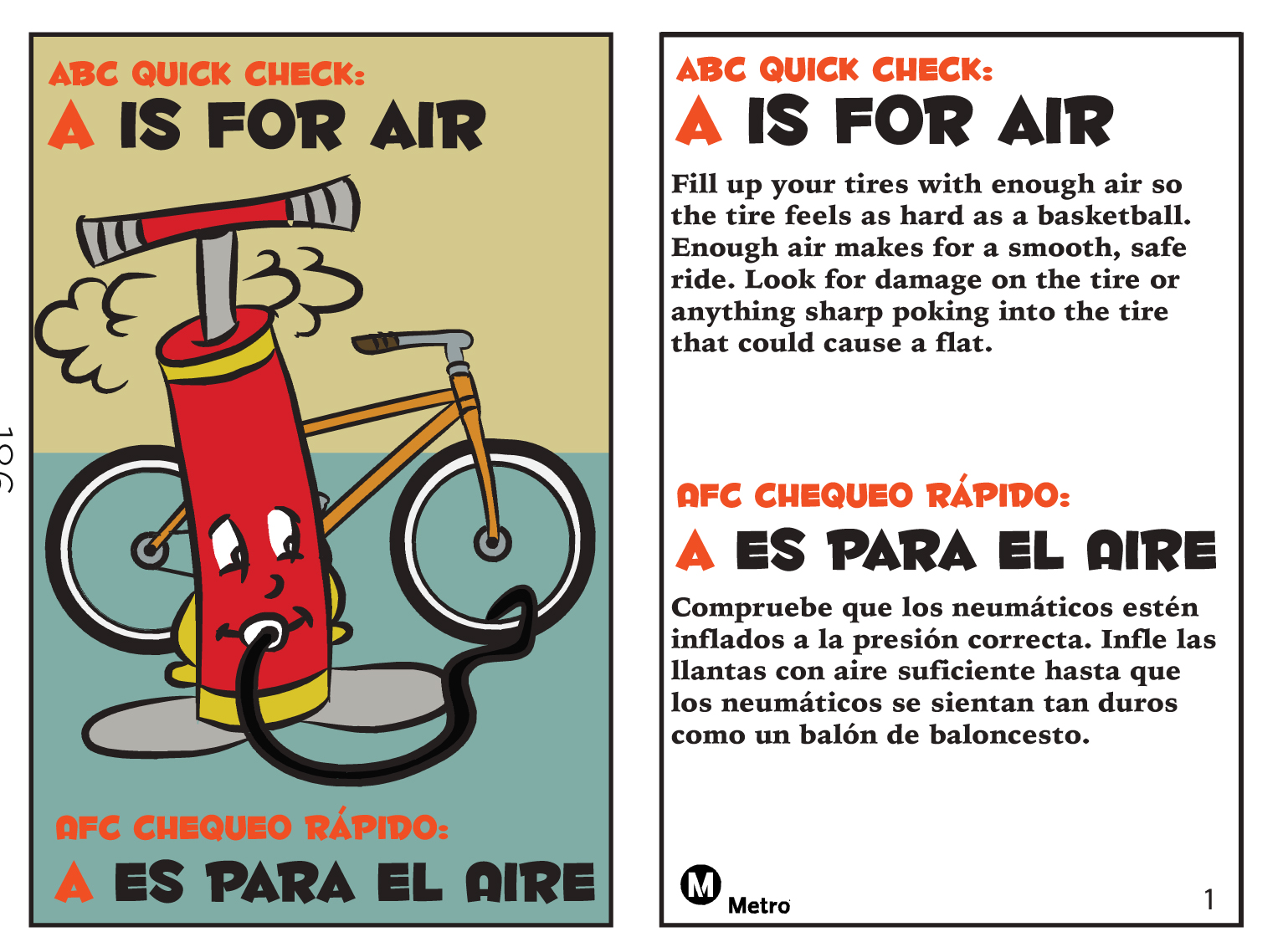
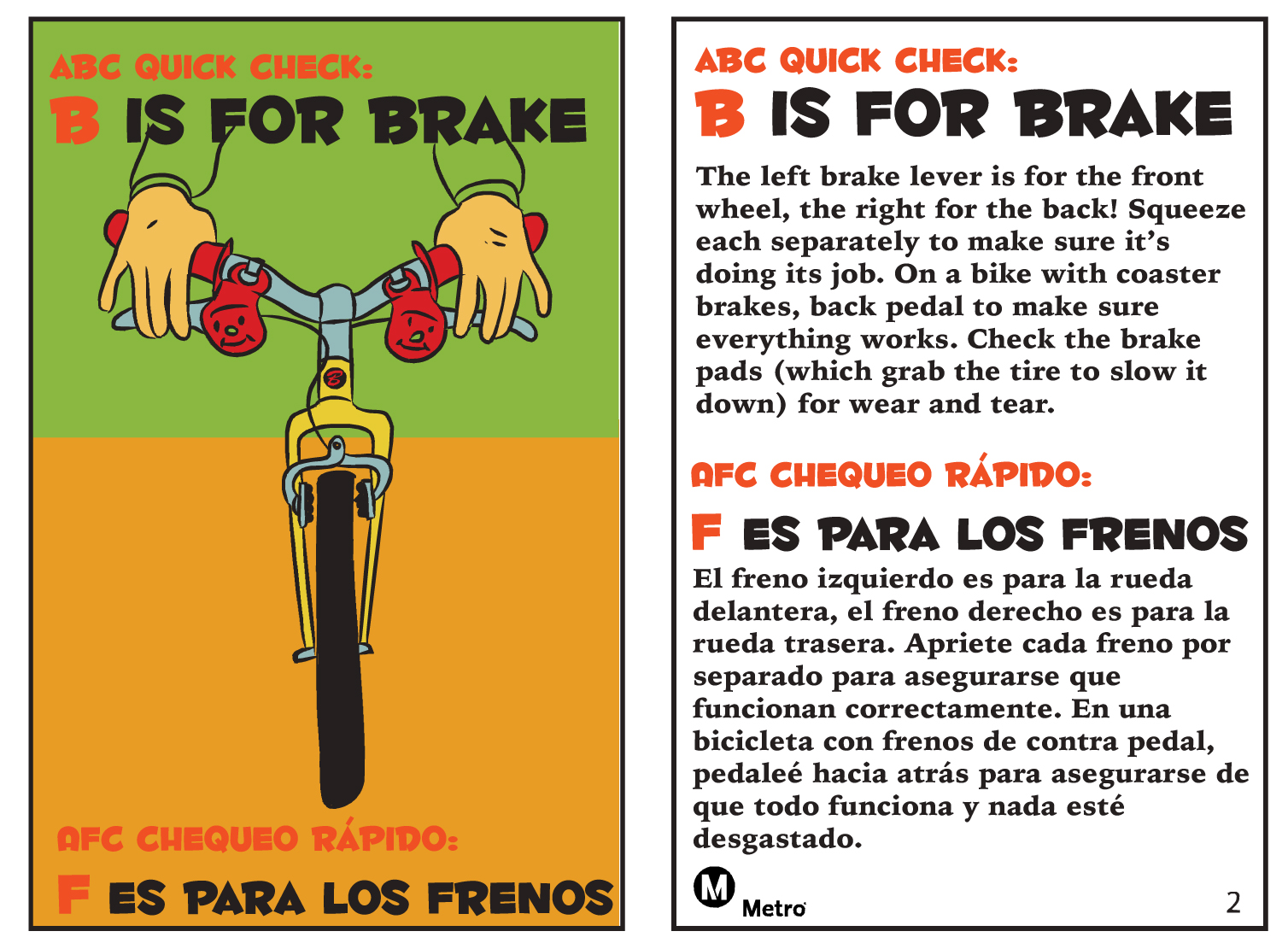



Know the Law
It is important to know and understand current traffic laws both in the state of California and within the local jurisdictions in which you will be riding. For instance, some cities do not allow cyclists on the sidewalk, others do. When riding on the street, a cyclist must obey the same traffic laws as other vehicles.
- Cyclists have all the rights and responsibilities of motorists.
- Cyclists must obey all traffic laws, including riding with traffic, stopping at stop signs and signals and yielding to pedestrians.
- Riders under the age of 18 are required to wear a helmet
- Bicycles must be equipped with operational brakes
- Bikes must ride on the right side of the road, with the flow of traffic – do NOT ride against traffic
- Do not wear headphones or headsets when riding
- Do not use a cellphone while riding
- Do not carry packages that prohibit you from keeping at least one hand on the handlebars
- Use hand signals when turning
- Your bike should have a proper set of reflectors: Front (white), back (red), pedals and wheels. Add lights if you’re riding at night.
- Be visible – Avoid blind spots of cars. Pay extra attention at intersections and driveways.
- Be Predictable – Ride on the street with the flow of traffic. Do NOT ride against traffic.
- Use proper hand signals when turning or changing lanes
- Know your laws on sidewalk riding. It may be safer for children under 10 to ride on the sidewalk, but it may not be legal. Riders under the age of 10 lack the maturity and traffic awareness to make the decisions necessary for safe riding on streets.
- Carry basic emergency tools with you: pump, spare tube, patch kit, tire levers, multi tool, spare change and extra i.d. Practice changing out an innertube in a calm comfortable setting so when the time comes to use those skills, you’ll be more familiar and relaxed.
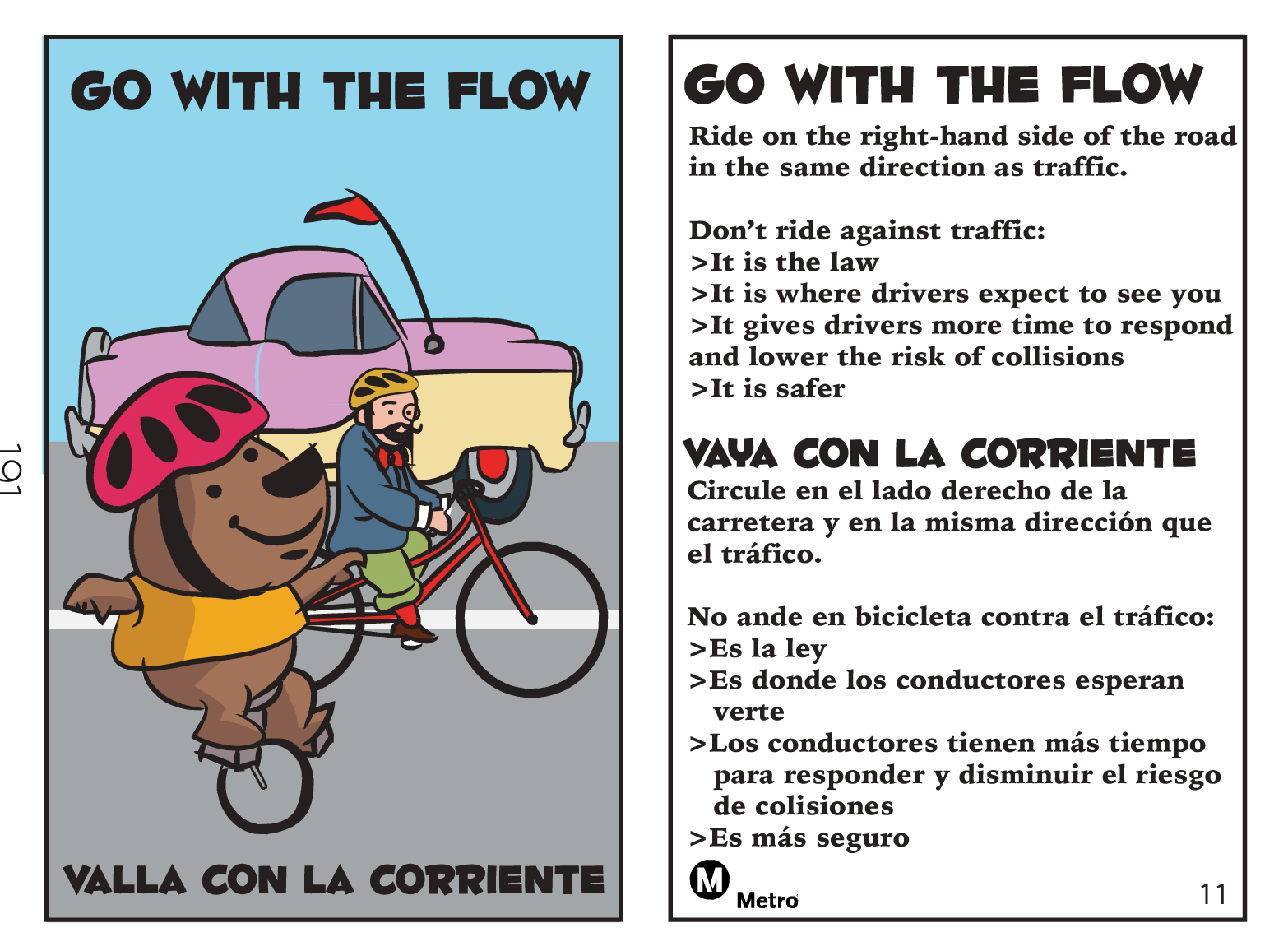
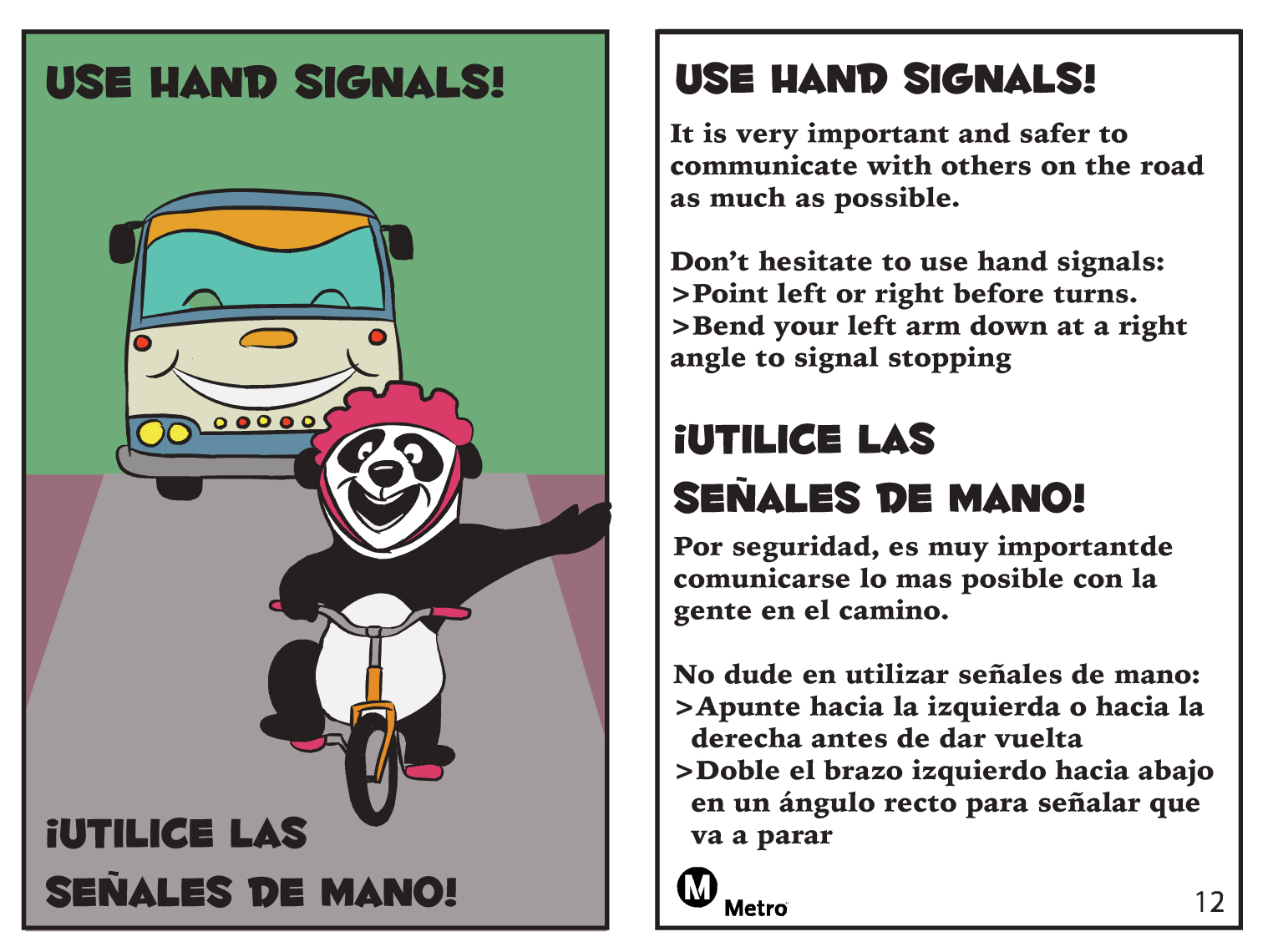
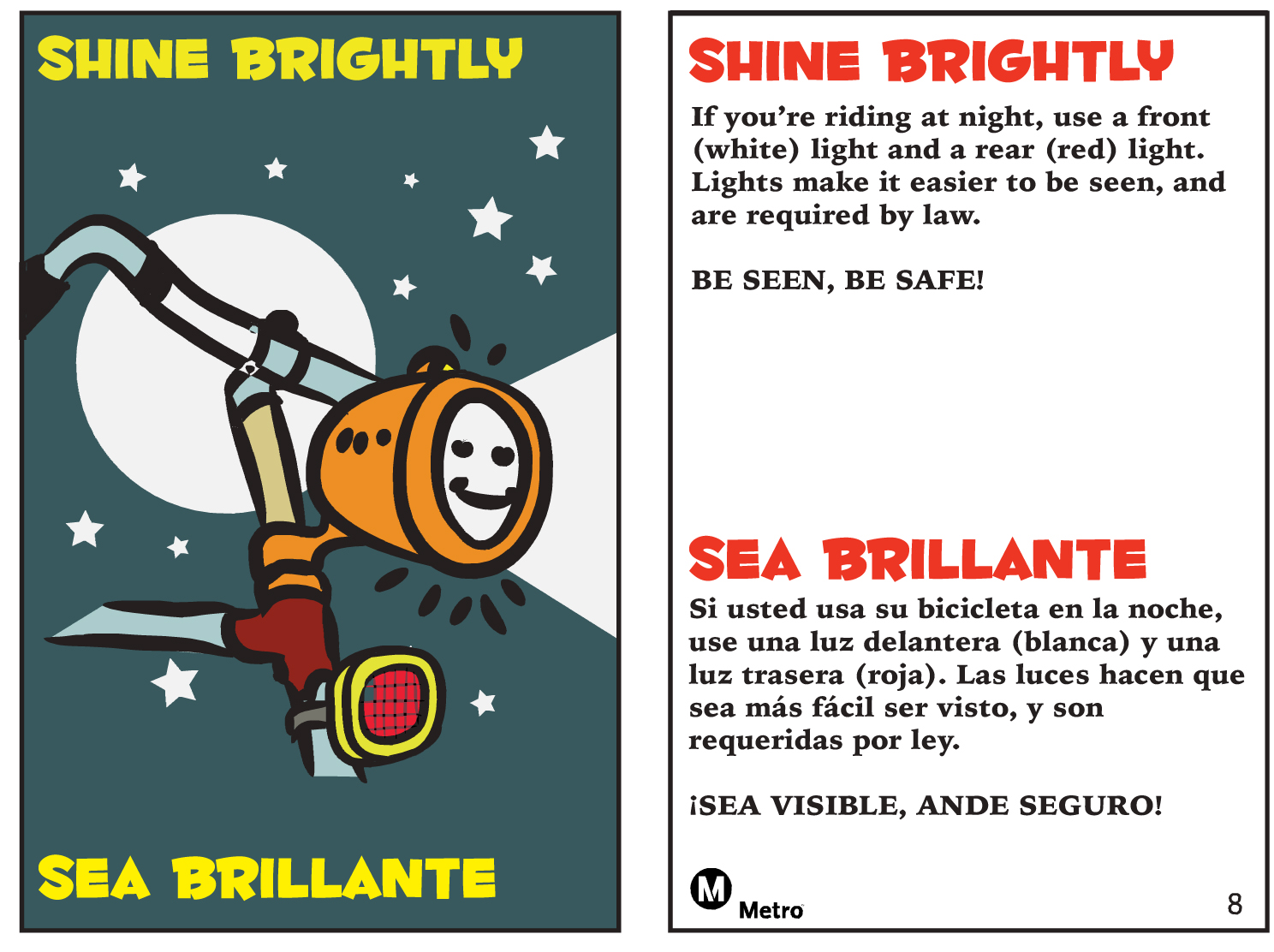
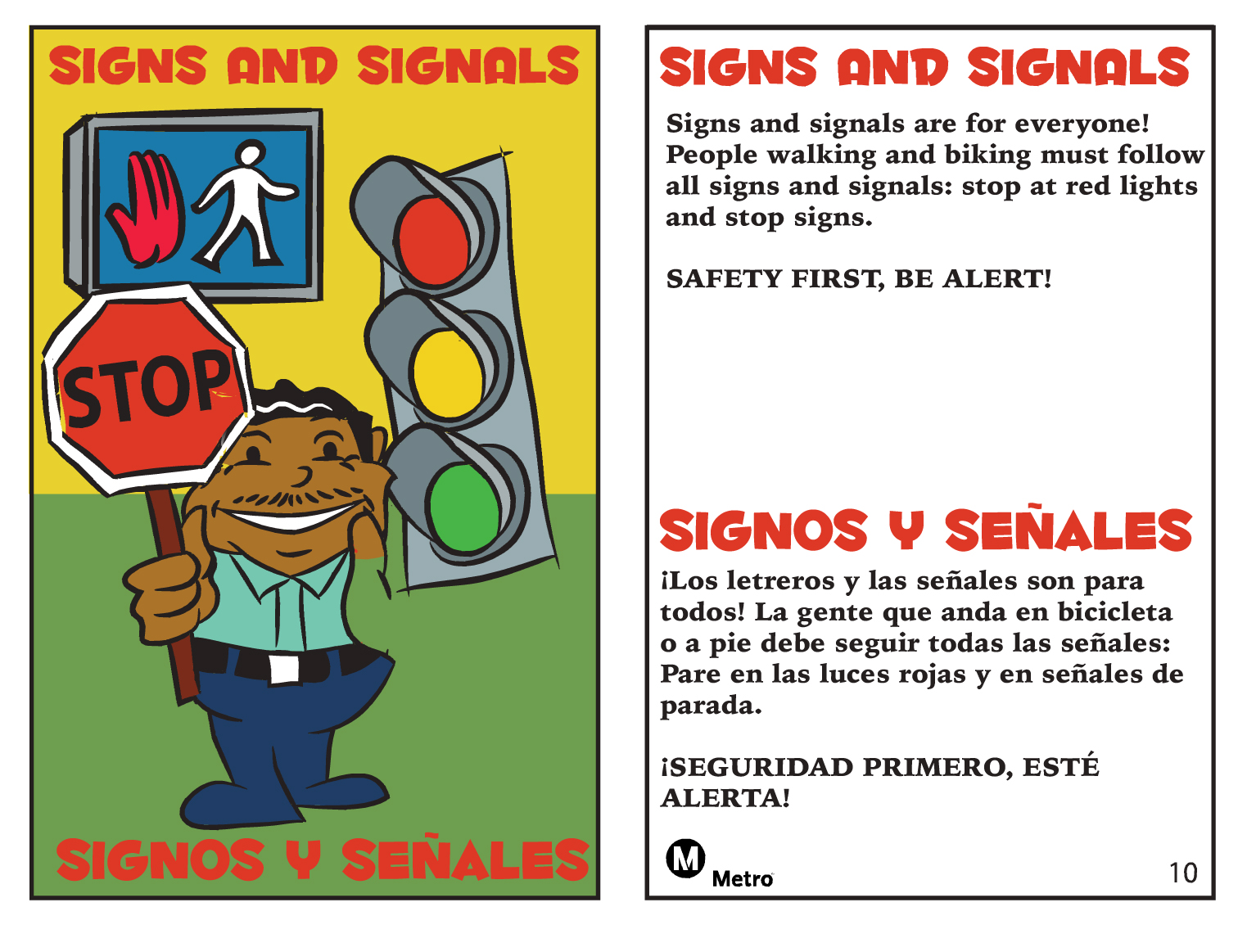
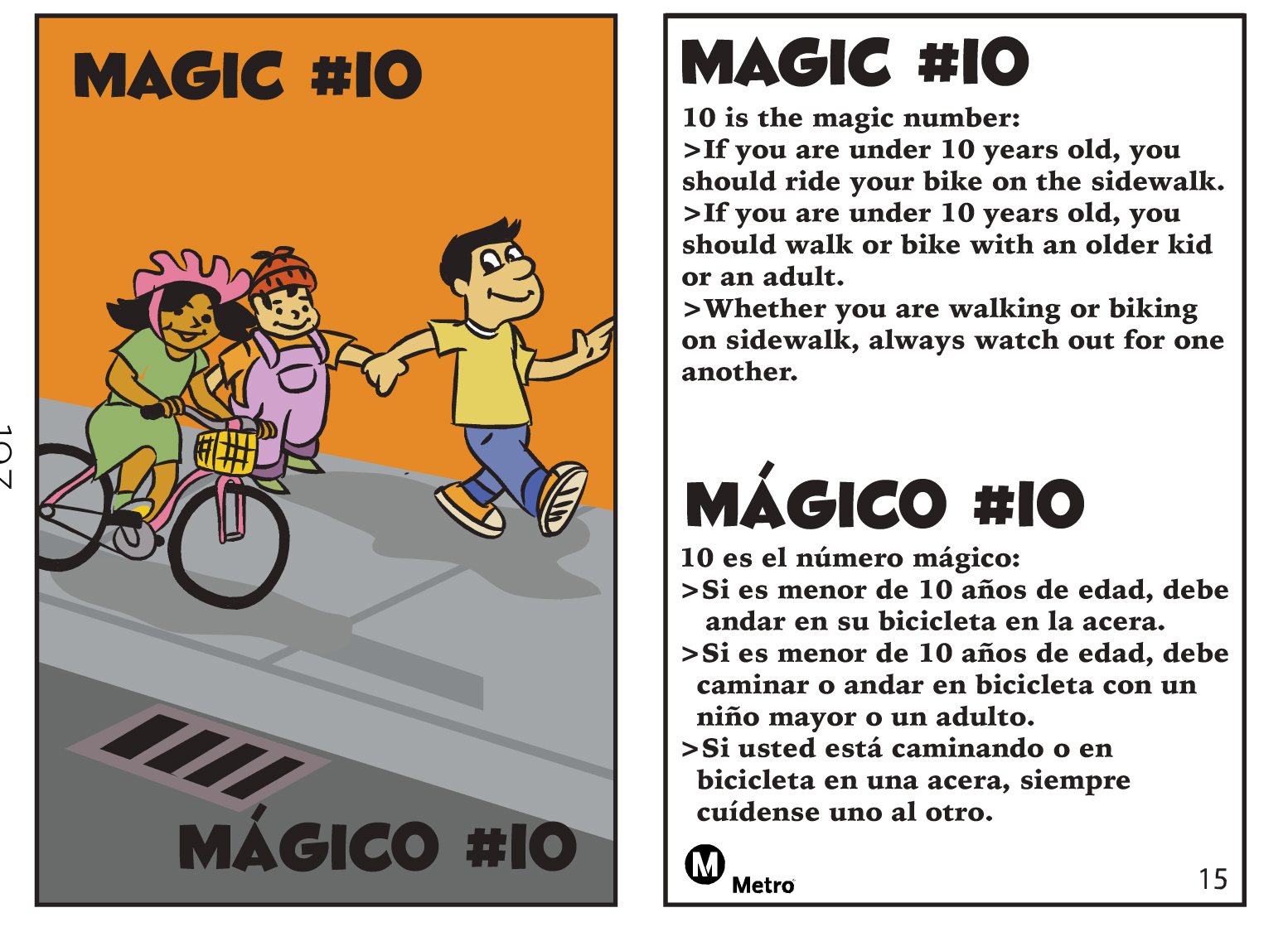
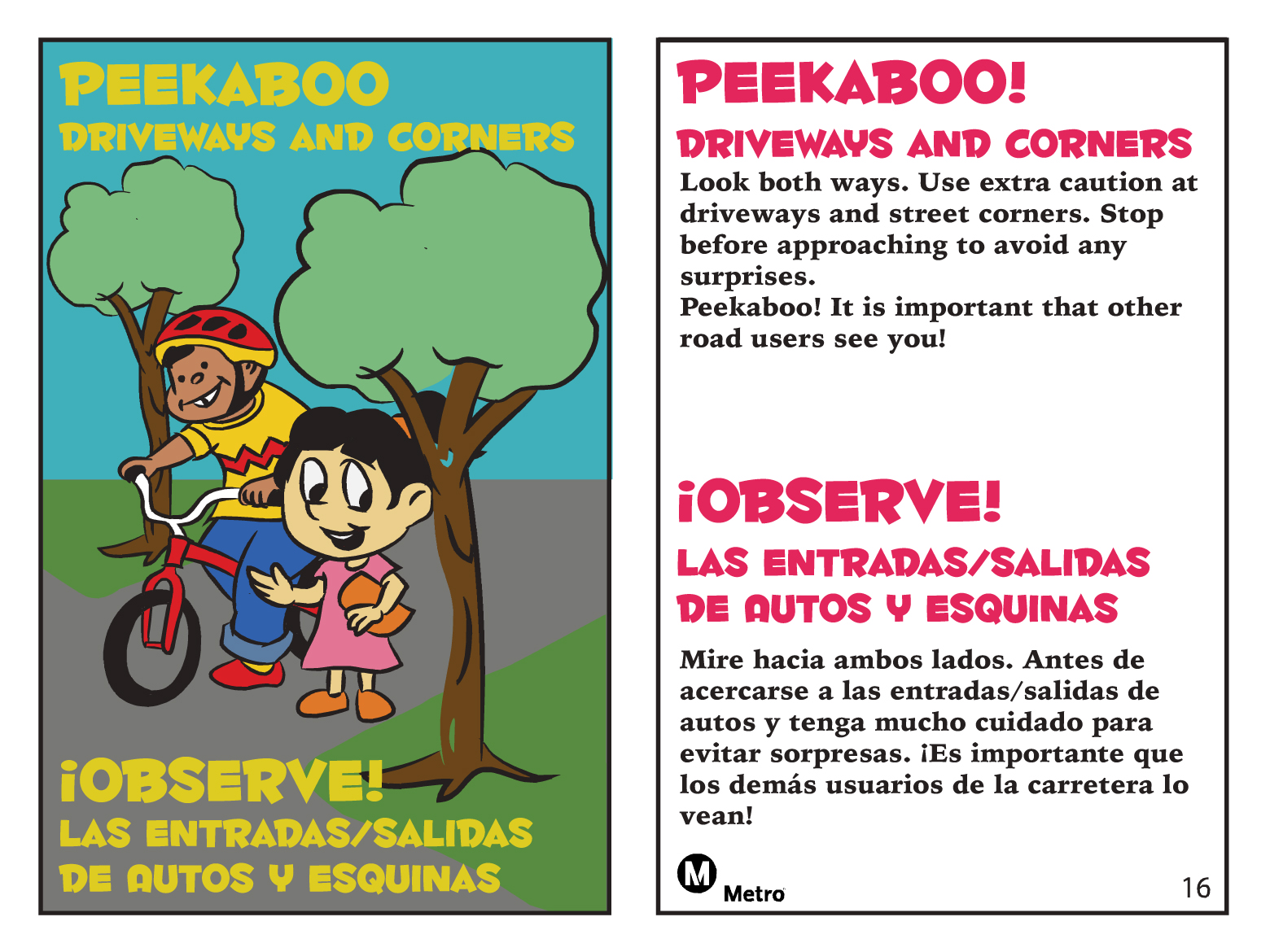
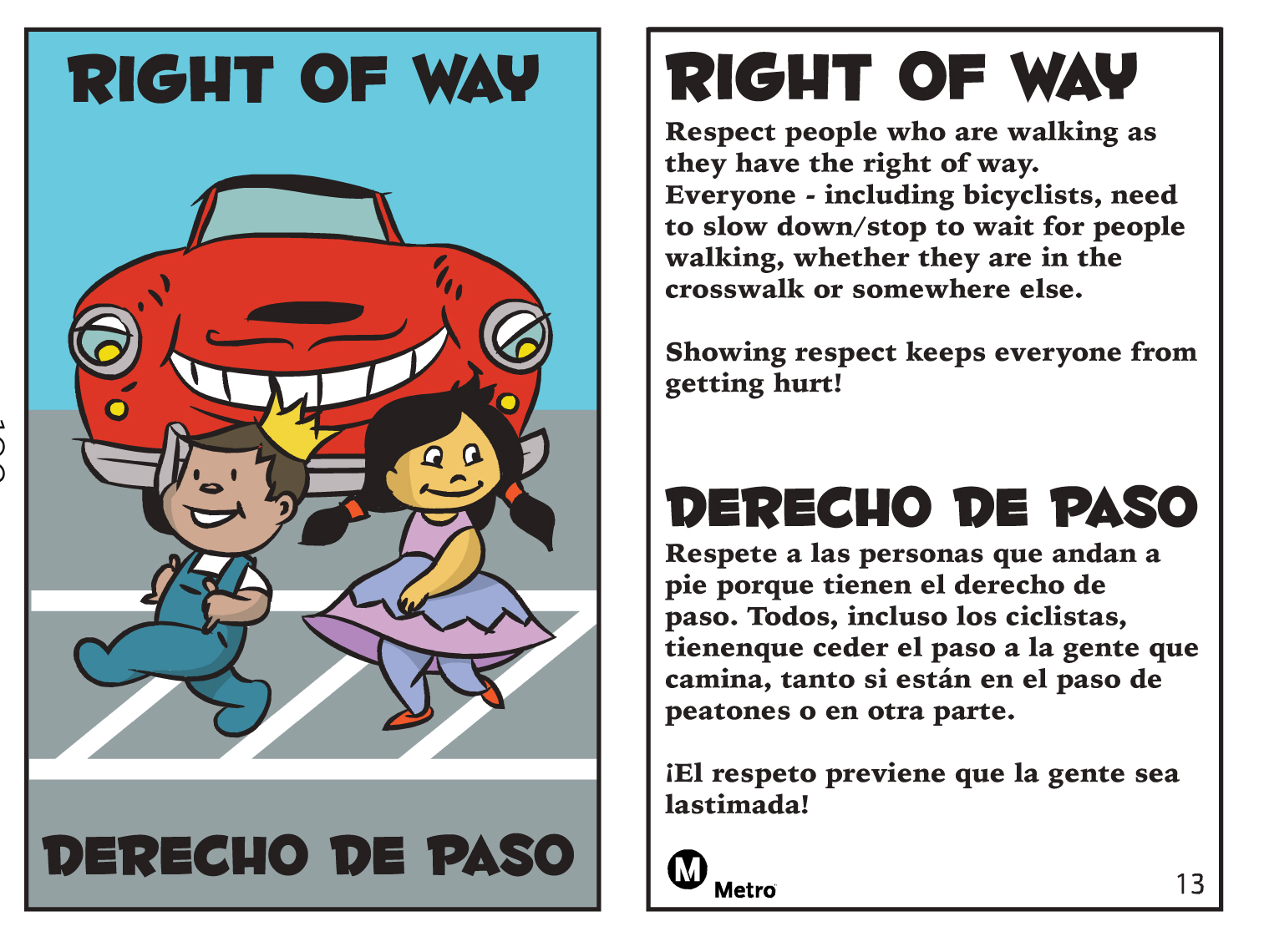
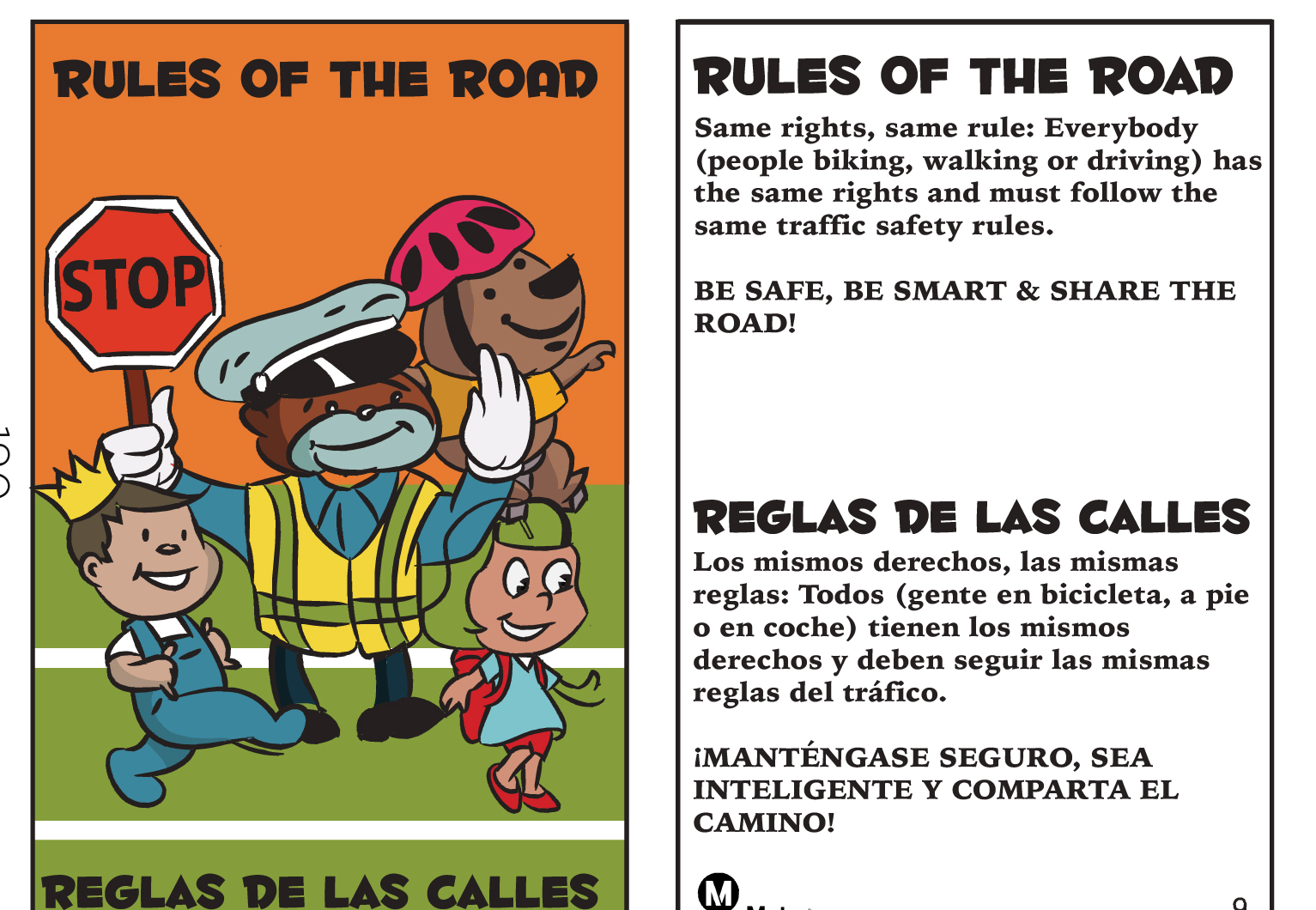
More Information
For more information, including maps, commuter tips a summary of state laws, visit the California Bicycle Coalition.
Have fun! Personalize your helmet with some of your favorite stickers. Reflective stickers are a great choice because they look cool and make you more visible to people driving cars.
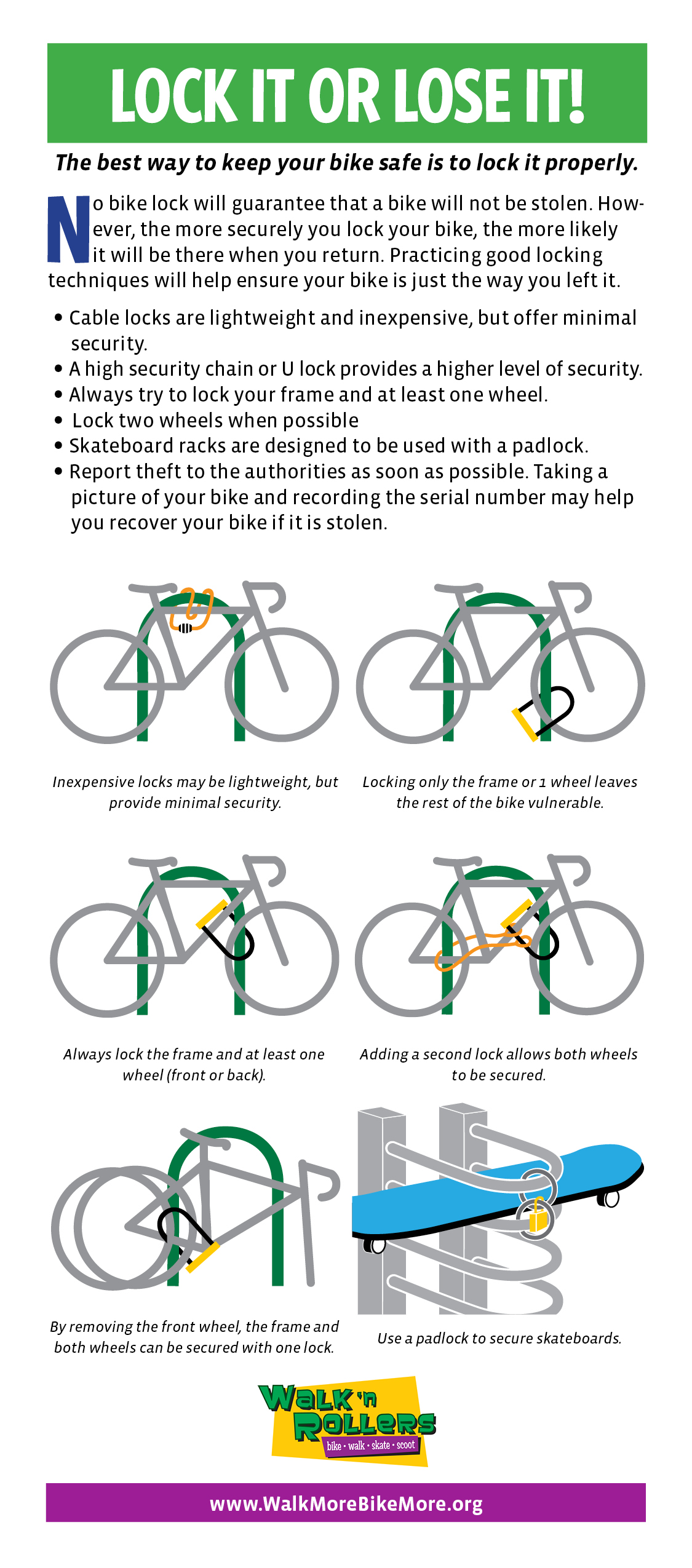 LOCK IT or LOSE IT: love your bike and remember to lock it properly! (click image to download PDF)
LOCK IT or LOSE IT: love your bike and remember to lock it properly! (click image to download PDF)
LINKS:
Back to SAFETY FIRST
